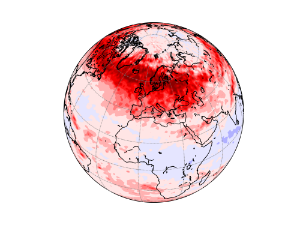Flights worldwide face increased risk of severe turbulence due to climate change
04 October 2017

Flights all around the world will be encountering lots more turbulence in future, according to the first ever global projections of in-flight bumpiness.
A new study led by the University of Reading has calculated that climate change will significantly increase the amount of severe turbulence worldwide by 2050–2080. Severe turbulence involves forces stronger than gravity, and is strong enough to throw people and luggage around an aircraft cabin.
Flights to the most popular international destinations are projected to experience the largest increases, with severe turbulence at a typical cruising altitude of 39,000 feet becoming up to two or three times as common throughout the year over the North Atlantic (+180%), Europe (+160%), North America (+110%), the North Pacific (+90%), and Asia (+60%).
"This problem is only going to worsen as the climate continues to change" - Professor Paul Williams, University of Reading
Dr Paul Williams, Professor of Atmospheric Science at the University of Reading, led the new research. He said: “Air turbulence is increasing across the globe, in all seasons, and at multiple cruising altitudes. This problem is only going to worsen as the climate continues to change. Our study highlights the need to develop improved turbulence forecasts, which could reduce the risk of injuries to passengers and lower the cost of turbulence to airlines.”
The study also makes the first ever turbulence projections for the Southern Hemisphere and the tropical regions of the planet. The amount of airspace containing severe turbulence is calculated to increase over South America (+60%), Australia (+50%), and Africa (+50%).
Mr Luke Storer, a PhD researcher who worked on the study, said: “While turbulence does not usually pose a major danger to flights, it is responsible for hundreds of passenger injuries every year. It is also by far the most common cause of serious injuries to flight attendants. Turbulence is thought to cost United States air carriers up to $200 million annually.”
The new research, published today (4 October) in Geophysical Research Letters, analyses supercomputer simulations of the future atmosphere with a focus on clear-air turbulence, which is particularly hazardous because it is invisible. The expected turbulence increases are a consequence of global temperature changes, which are strengthening wind instabilities at high altitudes in the jet streams and making pockets of rough air stronger and more frequent.
Dr Manoj Joshi, a Senior Lecturer in Climate Dynamics at the University of East Anglia who also worked on the study, said: “The study is another example of how the impacts of climate change can be felt through the circulation of the atmosphere, not just through increases in surface temperature itself.”
A previous study led by Professor Williams revealed climate change will make transatlantic flights from Europe to North America longer in future.
Full reference:
L. N. Storer, P. D. Williams, M. M. Joshi (2017) Global Response of Clear-Air Turbulence to Climate Change. Geophysical Research Letters, DOI: 10.1002/2017GL074618
